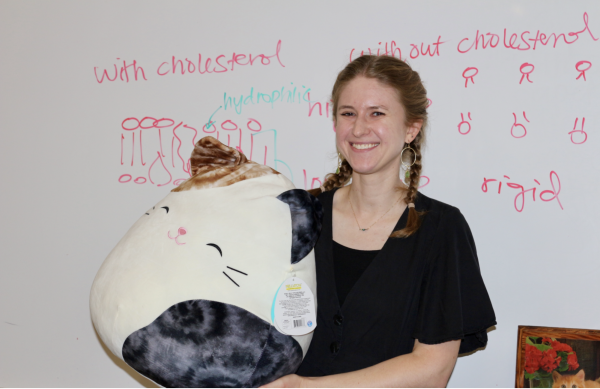Social Media Negatively Affects the Mental Health of Students
Whether it be calling a friend to share how your day has been, texting a significant other, or catching up with a friend’s Instagram story, social media has become a quintessential part of our lives. Despite it being a useful tool to contact people, networking apps expose teenagers to seemingly unharmful media. This exposure leads to physical and cultural issues such as normalizing comparisons, cyberbullying, and sleep deprivation–all having detrimental effects on students’ mental health.
Flamboyant stories, jocular posts, and persuasive advertisements of the current digital era all excel in inducing our emotional responses. Mass-consuming social media easily negatively affects students’ emotional state and mental health. Teenagers are easily influenced by social media; they are not yet mentally mature. In fact, according to the American Academy of Child & Adolescent Psychiatry, “Peers play a large role in the social and emotional development of children and adolescents.” As our student population consists of mostly teenagers, the psychological and emotional states of Irvington High School students are particularly vulnerable to social media’s influences.
A major contributor is comparison. According to Forbes Magazine, “we fall into the trap of comparing ourselves to others as we scroll through our feeds, and make judgments about how we measure up.” Social media is a place to share our appearance and accomplishments with the world–but is also an infestation of unhealthy body and academic expectations. Every day, teenagers scroll through pictures of glammed-up Instagram influencers and their lavish lifestyles. This creates unrealistic beauty standards perpetuated by celebrities, leading to dissatisfaction with one’s own appearance. This phenomenon is a cause of body dysmorphia, or formally, Body Dysmorphic Disorder (BDD). Anxiety & Depression Academy of America defines the disorder as, “a body-image disorder characterized by persistent and intrusive preoccupations with an imagined or slight defect in one’s appearance”. By inducing a constant comparison of teenage bodies to an ‘ideal image’ of what a body should look like, social media is a major factor of BDD. Contracting the disorder leads to low-self esteem and paranoia, deteriorating mental health.
Social media also undermines teenagers’ self worth and accomplishments. The digital age allows anyone to look into the lives of other people. Individual’s often selectively post their achievements, as that is what is considered ‘post-worthy.
Unlimited access to these posts is not always good. When posts from multiple accounts pile up to make someone’s feed, it creates a false sense of constant achievement from everyone else. Students may put themselves under unrealistically high expectations after seeing these posts and become self-critical for not being able to do the same. In many cases, students become overly critical of themselves and start devaluing their self-worth–another example of low self-esteem and poor mental health.
Another way social media causes poor mental health is through cyberbullying, also known as bullying through digital means. Being a method for virtual communication, social media is the primary place for cyberbullying to take place. Social media platforms provide anonymous methods and private messaging services for bullies to target victims. Cyberbullying’s effect on mental health is similar to that of in-person bullying. As Nemours Children’s Health specifies, “[Cyberbullying] also can make someone feel jumpy, anxious, or sad. If someone is already depressed or anxious, cyberbullying can make things much worse.” A gradual accumulation of these symptoms leads to poorer mental health conditions like depression and anxiety.
Lastly, routine consumption of social media causes sleep deprivation. According to BBC News, teenagers who frequently use social media are more likely to get fewer hours of sleep. This results in sleep deprivation for the individual, which relates to mental health as the Sleep Foundation attributes, “Around 75% of depressed people show symptoms of insomnia.” Or in other words, insomnia is a common symptom leading to depression. Therefore, social media overconsumption not only negatively affects physical health but also mental health.
Despite overwhelming evidence indicating the negative effects social media has on students’ mental health, some may argue social media has positive effects of providing teenagers platforms to connect. Although it may seem that way, negative effects on mental health far outweigh these benefits. According to the National Center for Biotechnology Information, “[B]eing socially connected with other people can relieve stress, anxiety, and sadness, but lack of social connection can pose serious risks to mental health”. This associates poor mental health with a lack of social interaction.
But take the COVID-19 pandemic for example, despite only in-person communication being limited, symptoms of poor mental health skyrocket. Forbes Magazine analyzes this phenomenon, “[Y]oung people between the ages of 18-24 are more likely to suffer mental health problems during the pandemic than any age group…63% of young people are suffering significant symptoms of anxiety or depression.” This proves that negative effects of social media overwrites the supposed “connection” it provides, as depression symptoms should not have risen if social media was a valid form of connecting with others.
In addition to providing entertainment for us–especially during the pandemic–social media’s most significant effect on students of Irvington High School has to be its negative impact on our mental healths. Social media and its negative influence have unknowingly become a larger, worse part of our lives.







